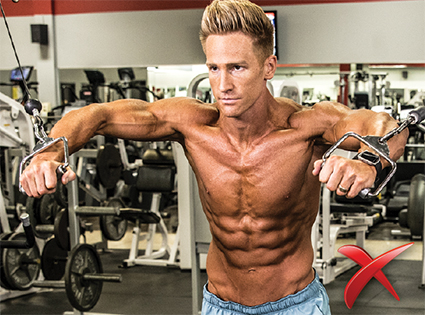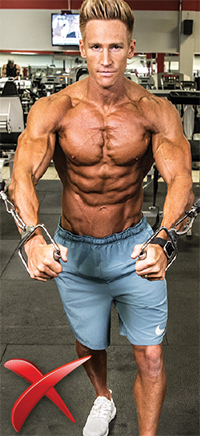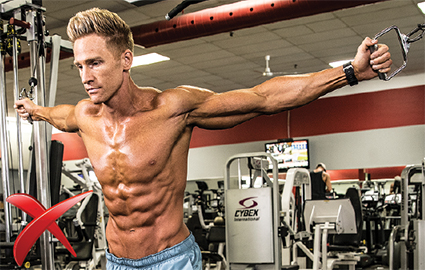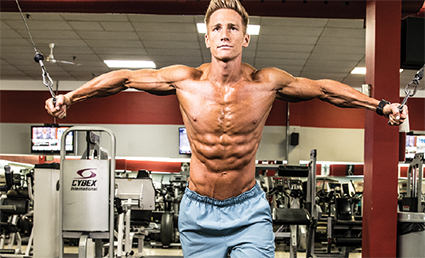4 Ways to Blow the Cable Crossover

It’s one of the best single-joint exercises to isolate your pecs, but you lose effectiveness by committing any of these form faux pas
For gym rats, Mondays mean fighting the crowds for chest equipment. Whether you’re using the bench press or incline, the Smith machine or Hammer Strength equipment, cables or the pec deck, you’ve got to be fleet of foot to nab an open piece of equipment before others lay claim.
Getting the equipment you want is half the battle; the other is doing the movement correctly. Few chest exercises are blown as frequently as the cable crossover. And that means diminished results! What can go wrong? Here we identify the four most common form blunders.
1. Pressing the Handles

Nearly everyone fails here! The problem is that trainers duplicate a pressing motion (shoulder and elbow joints engaged) rather than a flye motion (just the shoulder joints). Because the crossover is a single-joint exercise, you’re required to lock and hold a very slight bend in your elbows that mustbe maintained throughout the set. That means the degree of bend in your elbows must be the same at every point through the range of motion. But watching most folks in the gym, they do it like a press, with their hands close to their shoulders (rather than out wide). A press, of course, recruits the triceps, effectively reducing the isolation on the pecs (which is the whole point of doing a single-joint movement). If you go too heavy, you’re more likely to press the handles! The movement pattern should follow an arc rather than a straight line as you raise the weight. In fact, it’s the same motion you use on the pec deck!
2. Not Bringing the Handles Completely Together

As its name implies, in a crossover, one hand crosses over the other. By doing so, you extend the range of motion slightly, which puts more stimulus on the inner pec region. While you can’t do a crossover motion with dumbbell flyes, you can with cables, but we’d recommend alternating which side is above the other every rep. While it’s not required to cross hands, even achieving a point in which your hands nearly touch is better than stopping too far short, which can happen if you’re going too heavy.
3. Overextending Your Shoulder Joint

Because your working weight is typically fairly light with this movement, it’s fairly easy to allow the weights to pull the cable handles too far back, essentially moving beyond the normal range of motion and overextending your shoulder joint. Such hyperextension loosens the connective tissue over time, making you vulnerable to injuries when you’re using very heavy weights. As with any other joint, slow down the motion on the negative rep as you near full extension; you must control the weight when reversing directions.
4. Always Using the Same Pulley Position

One of the great advantages of using pulleys is the numerous pulley positions available to use. Although most of us do crossovers from the upper position (which hits the lower pecs most effectively), by repositioning them to the lowermost position and using an upward scooping motion, you more effectively hit the upper chest fibres. Of course, there are a number of in-between cable positions that hit in-between angles on your chest. If you’re looking to maximize chest size, it behooves you to not limit the variety of pulley positions in

